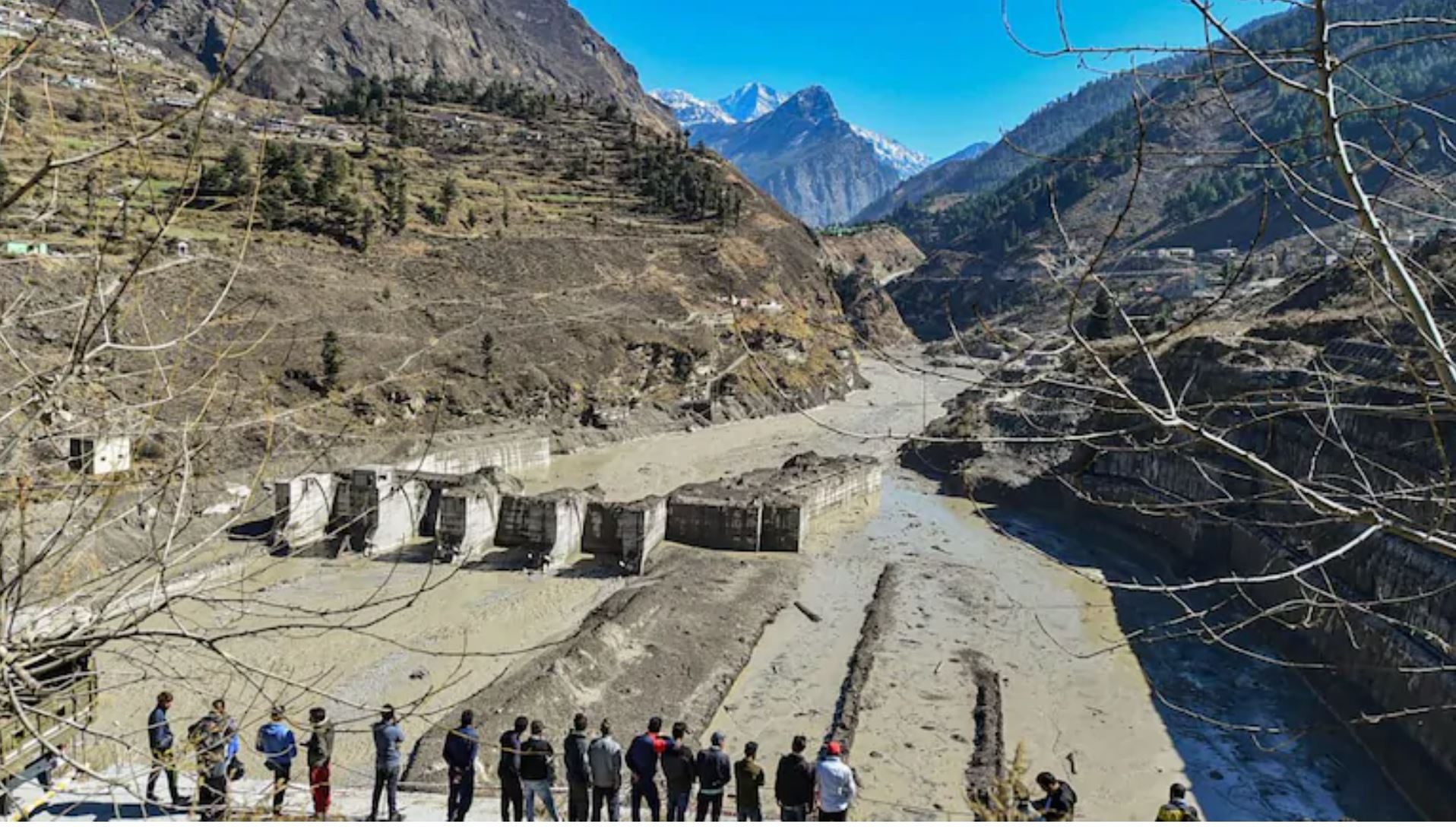10 February 2021
Hydroelectric power, dams and landslides in the Himalayas (and in other high mountain areas)
Posted by Dave Petley
Hydroelectric power, dams and landslides in the Himalayas
Controversy continues to rage in India as to the cause of the dreadful debris flow in Chamoli, with some organisations continuing to claim that it was caused by a GLOF or by some sort of glacial collapse, despite strong evidence to the contrary. Meanwhile efforts continue to recover the remains of the victims of the landslide, with some sources suggesting that there may be about 200 fatalities.
The macro-scale issue is however the management of risk in high mountain areas of the Himalayas, especially in the context of a warming climate, which is affecting this area particularly severely. At the time of the 50th anniversary of the 1963 Vajont dam disaster in Italy, I wrote a paper outlining the poor track record of landslide management in hydroelectric power schemes in high mountain areas in poor countries, especially in the Himalayas and in China. My central point was that the risk of landslides was insufficiently appreciated, and that slope failures were being poorly managed, in many dam projects in these mountain areas.
Over seven years on, significant landslide accidents continue to occur in hydroelectric power projects in the Himalayas and elsewhere. Notable examples have included Mangdechu in Bhutan, Taining County in China, Upper Madi in Nepal and the massive, ongoing problems at Punatsangchhu-I in Bhutan. There are many more that I have not featured here. Away from Asia, the extraordinary and deeply troubled Hidroituango project in Colombia is notable.
The events at Chamoli adds another, dreadful example to this roll call. There appears to be two hydroelectric schemes involved in the Chamoli debris flow, of which the most significant in the 520 MW Tapovan Vishnugad scheme:-

The Tapovan Vishnugad HEP site in the Himalayas after the Chamoli debris flow. Image from PTI via India Today.
.
The appears to have been a deeply troubled scheme even before the landslide. Descriptions of this project indicate that the expected completion date was in 2012, but at the time of the landslide it was still under construction. Problems seen to be associated with very difficult geological conditions, leading to slow progress in the tunnelling operations, including significant groundwater ingress. In 2014 there were reports of at least three occasions in which the TBM had become trapped.
But as the image above shows, the problems with this scheme are now much more serious. Aside from the damage to the infrastructure, which looks to be extremely severe (see the satellite images in an article in India Today), there will be a need to assess properly the likelihood of another event of this type in the life of the dam. In a warming climate this cannot be precluded.
Back in 2013 I noted that (Petley 2013):
In the coming years a very large amount of dam construction is planned around the world as the need for hydroelectric power increases for both social and environmental reasons. Major hydroelectric power projects are planned or proposed in high mountain areas on all of the inhabited continents. However, the global centre for large-scale dam and reservoir projects in the next two decades will inevitably be South and East Asia, with the steep valleys of the Himalayas being responsible for a substantial proportion of that planned activity.
It is clear that a very large number of new projects are planned in this region in the coming years. In most cases these projects will be constructed in areas that have been subject to high levels of landslide activity in the past, such that palaeo-landslide deposits are likely to be extensive. Landslide activity under contemporary climatic conditions is likely to be high, and most of this area is also subject to occasional large or very large earthquakes, which are likely to be associated with extensive landslide activity. Finally, the effects of climate change in this area may be increased precipitation intensity , which may increase landslide activity in coming years. Thus, without careful management there is a strong potential for continued landslide impacts on large dam and reservoir projects.
Since the Vajont disaster, the dam and reservoir industry has very successfully identified and mitigated landslides, albeit at times at very high cost. A similar level of action is now required to address landslides occurring at and around dam construction sites and in the camps housing the workers, especially in East and South Asia. To do so will require concerted effort from planners, funding agencies, regulators and construction companies.
Sadly, the lessons from Vajont, and from many subsequent landslide events in and around large dam projects, have not been learnt. Until they are we will see many failures, with high levels of loss.
.
Reference
Petley, D.N. 2013. Global losses from landslides associated with dams and reservoirs. In: Genevois, R. and Prestininzi, A. (eds) International Conference on Vajont – 1963-2013. Thoughts and analyses after 50 since the catastrophic landslide. Italian Journal of Engineering and Environment – Book Series N. 6, pp 63-72.


 Dave Petley is the Vice-Chancellor of the University of Hull in the United Kingdom. His blog provides commentary and analysis of landslide events occurring worldwide, including the landslides themselves, latest research, and conferences and meetings.
Dave Petley is the Vice-Chancellor of the University of Hull in the United Kingdom. His blog provides commentary and analysis of landslide events occurring worldwide, including the landslides themselves, latest research, and conferences and meetings.
Watch: DDAG chat show features discussion on speedy construction of 720 MW Mangdechhu hydroelectric project in spite of several challenges.
https://www.youtube.com/watch?v=F0aoxo1bIR0